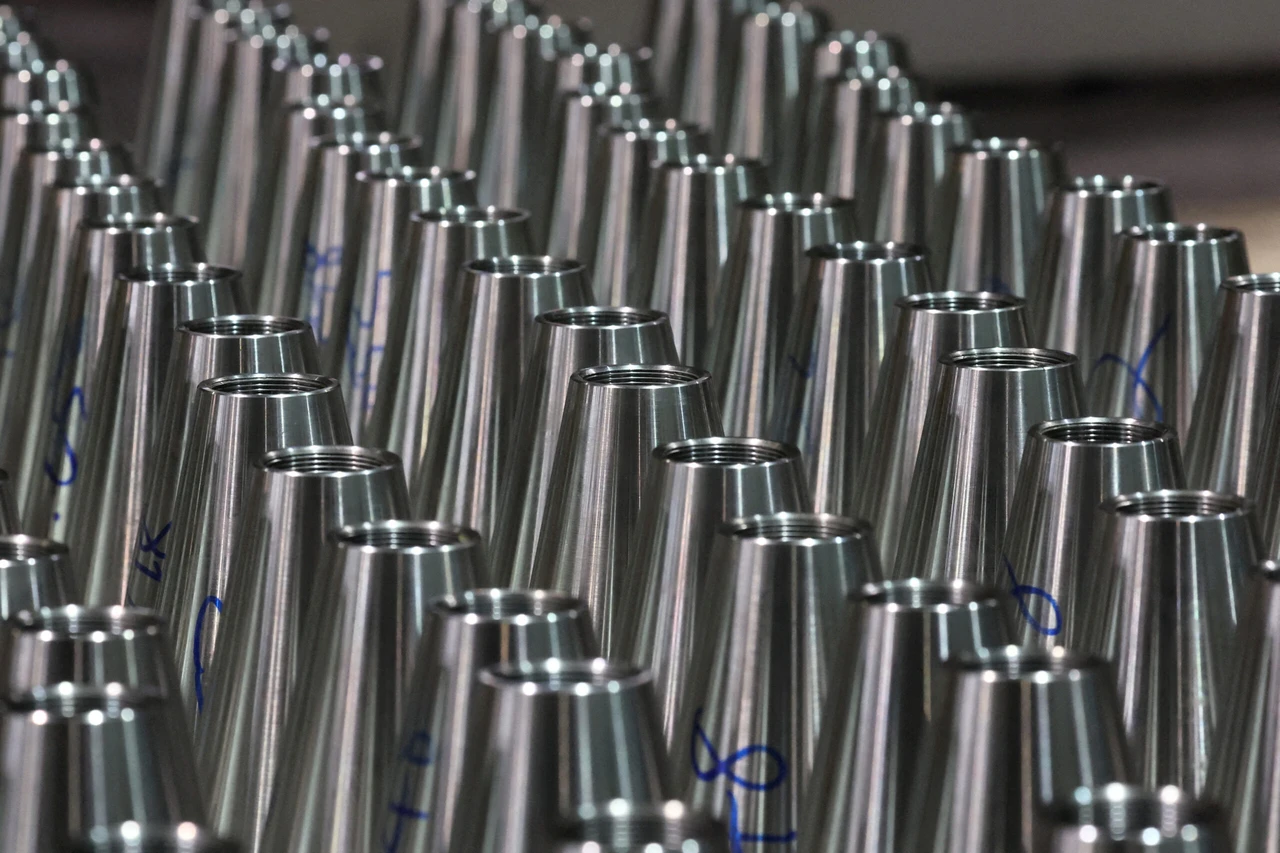US struggles to meet artillery shell demand amid Ukrainian conflict
 155mm artillery shells are seen during the manufacturing process at the Scranton Army Ammunition Plant in Scranton, Pennsylvania, U.S., February 16, 2023. (Reuters Photo)
155mm artillery shells are seen during the manufacturing process at the Scranton Army Ammunition Plant in Scranton, Pennsylvania, U.S., February 16, 2023. (Reuters Photo)
The United States is facing challenges in rapidly producing crucial artillery shells, particularly those used in Ukraine amid the Russian occupation, according to a Bloomberg report.
The conflict has transformed into an older, ammunition-centric battleground, with the 155-millimeter shell being the most critical hardware in the war zone. These shells, measuring 2 feet (24 inches) long and weighing around 100 pounds, are standard ammunition among NATO countries but are dangerously scarce.
Turkish companies have participated in the production of this ammunition in the U.S. In February 2024, U.S. Ambassador Jeff Flake announced the establishment of production lines for 155 mm shells in Texas with the assistance of a Turkish defense company.
Flake revealed that the U.S. Department of Defense has built three ammunition lines in Texas purchased from a Turkish defense firm, estimating that 30% of the 155 mm shells produced in the U.S. will be made in this Texas factory next year.
Since the end of the Cold War in the 1990s, the Pentagon has disposed of or neglected facilities once used for everything from shells to explosive charges, focusing instead on transforming warfare with high-tech weapons.
The remaining infrastructure comprises outdated machines and a small workforce unable to meet increasing international demand.
Before Ukraine’s occupation, the U.S. produced an average of 14,400 monthly shells. Currently, the U.S. is spending over $5 billion to refurbish aging factories from Scranton, Pennsylvania, to rural Louisiana and southwest Virginia, aiming to produce 100,000 155 mm shells per month by the end of next year.
This mobilization has been unprecedented in terms of speed and scale since World War II.
The U.S. once produced large quantities of 155 mm shells. According to the U.S. Army War College publication Parameters, the U.S. entered the Korean War with over 6 million shells. Defense planners in 1980 claimed government facilities could produce up to 84,000 shells per month, potentially escalating to 438,000 if war broke out.
The situation changed after the Cold War, with the likelihood of intense ground warfare seeming remote. Facilities closed, and workers lost their jobs. Similar trends were seen in post-war Europe, where countries increased spending as nations rearmed.
In recent months, U..S 155 mm shell stocks depleted because of shipments to Ukraine and support for operations in Israel’s Gaza Strip. Additionally, insufficient production of black powder, a critical propellant for shells, further hampers supplies.
Another key component, TNT, hasn’t been produced in the U.S. since the 1980s, forcing the Pentagon to purchase it from countries like Poland and Türkiye.
Plans for higher-tech shells to replace traditional 155 mm ammunition have faced challenges, especially in Ukraine where targeting systems were thwarted by Russia in initial tests.
The prospect of future wars resembling the conflicts in Ukraine raises fears of a breaking point in the U.S. arsenal.
The US Army is engaged in a costly recovery effort. Congress allocated $650 million for a TNT production facility that will take two years to build. Funding for ongoing purchases from renewed facilities is likely to continue for years.
Finding the funds remains a significant challenge. The U.S. must refurbish old buildings, construct new ones, acquire updated machinery, and hire and train workers.
The army aims to produce 68,000 shells per month by early 2025. As of May, production has reached 36,000 shells.
While Russia aims for superiority through a draining war, both sides in Ukraine fire thousands of shells daily. General Christopher Cavoli, NATO’s top ally commander in Europe, expects Russia to fire ten times the number of shells Ukraine can respond to by the end of April.
Since accepting an additional aid package in April, Ukraine has improved its defense capabilities and received more weapons and ammunition.
Observers note Russia’s reliance on refurbished weapons from the Soviet era, along with acquisitions from North Korea and Iran, compensating for quality with quantity.
While some allies commend the Pentagon’s efforts, concerns persist about dwindling Western ammunition stocks.
Particularly Baltic countries express worries that even the most optimistic estimates for Western artillery production lag significantly behind Russia’s increased output.
Estonian Defense Minister Hanno Pevkur stated Russia fires 70,000 shells daily, equivalent to Europe’s annual production a decade ago, highlighting the urgency of addressing ammunition shortfalls.
The European Union delayed its ambitious goal of sending 1 million artillery shells to Ukraine by March but is preparing to produce 1.4 million by year-end and 2 million in 2025.
U.S. officials see arming Ukraine as a way to bolster their readiness for future conflicts. Increasing ammunition production is costly and time-consuming, but the U.S. strives to bridge the gap amid escalating tensions in Europe, the Middle East, and the Pacific.



